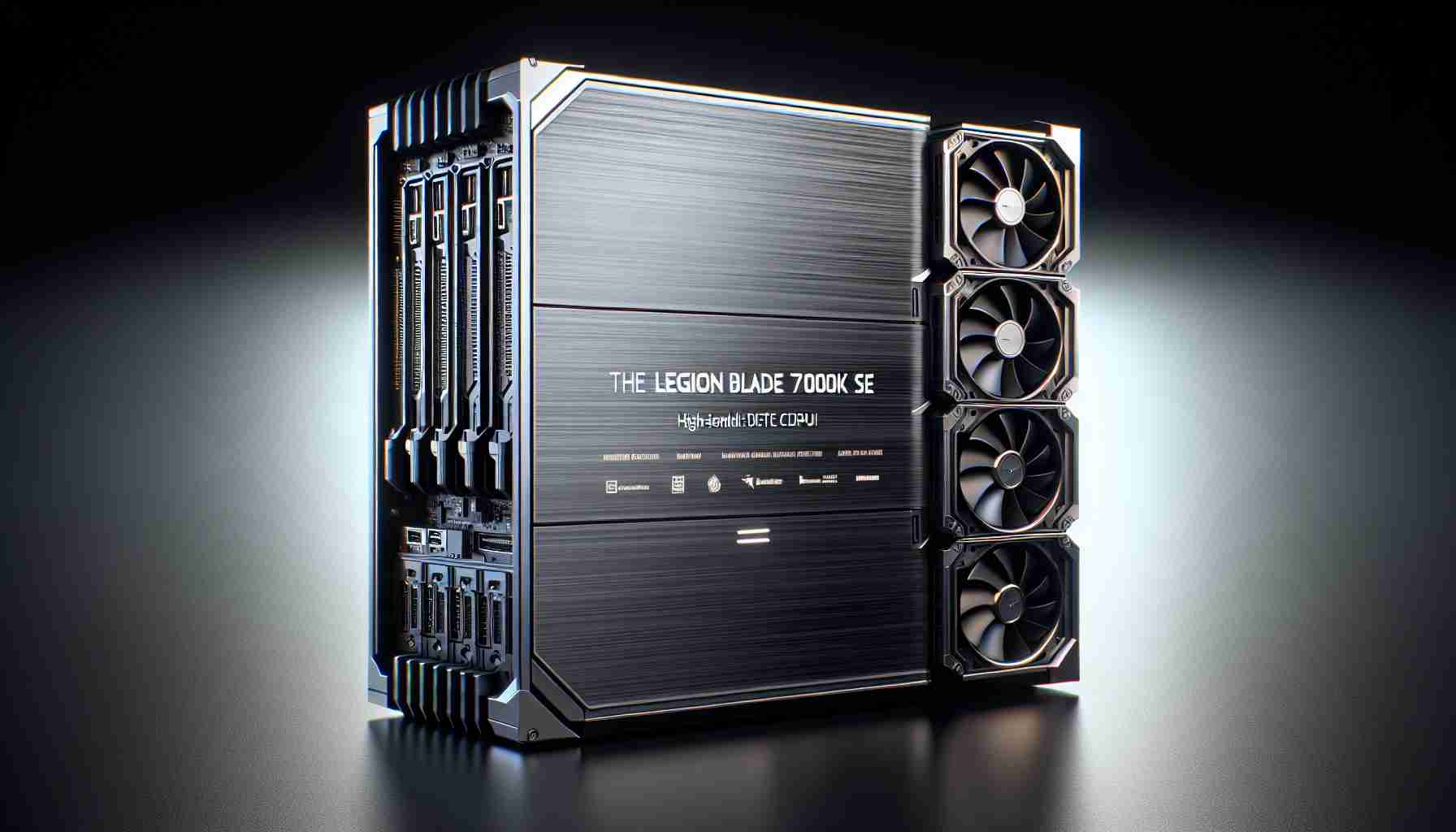Lenovo’s desktop PC landscape is shifting with the advent of the Legion Blade 7000K Super Edition (SE). This innovative machine is the latest development in the Blade 7000K range, enhancing user experience with impressive specifications. What sets this model apart is Lenovo’s strategic decision to embed powerful mobile CPUs—in particular, the 14th and 13th Gen Intel HX family—into a desktop chassis to provide users with superior performance at a reduced cost.
The Blade 7000K SE showcases a consistent design language with its predecessors, notably featuring a mesh front panel that promotes cooling and is accentuated by the LED-illuminated LEGION branding. However, the true transformation lies under the hood.
Lenovo’s new Blade 7000K SE makes a bold leap with its internal specifications. By introducing the latest Intel’s mobile CPUs, Lenovo is reshaping the market’s expectations for desktop price-to-performance value. Notably, processors such as the Core i9-14900HX and other members of the Raptor Lake Refresh mobile line are featured to capitalize on their superior power efficiency and cost-effectiveness. Complimenting the raw CPU power, Lenovo pairs these processors with NVIDIA’s Ada GeForce RTX 40 series graphics cards, introducing variations like the RTX 4070 Ti Super and the RTX 4060.
As for the memory, these new desktop units are packed with significantly more RAM, thereby further boosting performance capabilities. While the pricing details for the enhanced Blade 7000K SE remain under wraps, Lenovo suggests that they will pose a competitive challenge to traditional desktop CPU models, potentially making high-end performance more accessible than ever before.
Advantages of Lenovo Legion Blade 7000K SE with Mobile CPUs:
1. Cost-Efficiency: The integration of mobile CPUs can lower manufacturing costs without a significant loss of performance, potentially resulting in more affordable desktop solutions for consumers.
2. Power Efficiency: Mobile CPUs, like the 14th and 13th Gen Intel HX family, are optimized for power efficiency, reducing energy consumption, and possibly the total cost of ownership over the lifespan of the PC.
3. Performance: These processors are designed to handle high loads efficiently, ensuring that the Blade 7000K SE can cope with demanding applications and gaming requirements.
4. Modern GPU Integration: Pairing the efficient mobile CPUs with NVIDIA’s latest Ada GeForce RTX 40 series graphics cards creates a powerful combination for both gaming and professional workloads.
5. RAM: By including more RAM, multitasking and high-memory tasks are handled more effectively, improving overall system responsiveness.
Disadvantages of Lenovo Legion Blade 7000K SE with Mobile CPUs:
1. Perception: Some enthusiasts may be skeptical about mobile CPUs in a desktop format, expecting lower performance compared to traditional desktop CPUs.
2. Upgradability: Mobile CPUs are typically soldered onto the motherboard, potentially limiting the upgradability options for users compared to desktops with socketed CPUs.
3. Heat Dissipation: Although mobile CPUs are optimized for efficiency, high-performing components in a desktop chassis often require sophisticated cooling solutions to maintain optimal temperatures.
Key Questions & Answers:
– Why are mobile CPUs being used in a desktop PC? Mobile CPUs may offer a more cost-effective and power-efficient solution while still providing high performance, making them an attractive option for reducing costs without sacrificing quality.
– How does the performance of mobile CPUs in the Legion Blade 7000K SE compare to traditional desktop CPUs? Mobile CPUs like the 14th and 13th Gen Intel HX are high-end and perform competitively with desktop CPUs, particularly in multi-threaded applications.
– How will the use of mobile CPUs affect upgrade options for the Legion Blade 7000K SE? Since mobile CPUs are typically not upgradeable due to being soldered, it limits the user’s ability to upgrade the processor in the future.
Key Challenges & Controversies:
– Consumer Acceptance: Convincing traditional desktop PC users to embrace a system powered by mobile CPUs could be challenging, as there may be concerns regarding performance and upgradability.
– Market Positioning: Lenovo must carefully position the Blade 7000K SE to highlight its strengths without cannibalizing sales of their traditional desktop offerings.
– Performance Validation: Lenovo needs to ensure that performance benchmarks and real-world use cases back up their claim of mobile CPUs delivering comparable or superior performance to desktop counterparts.
For anyone interested in further exploring Lenovo’s products and innovations, you can visit their official website through this link: Lenovo Official Website.
